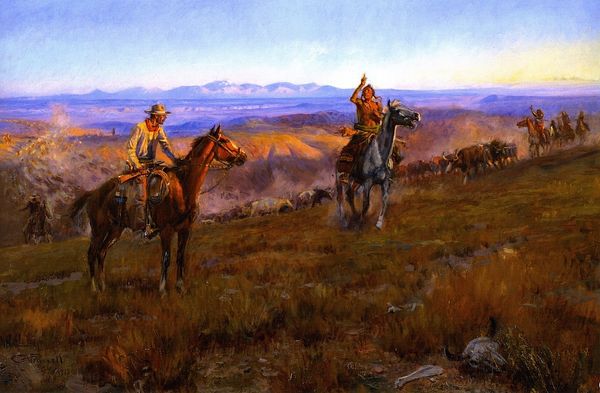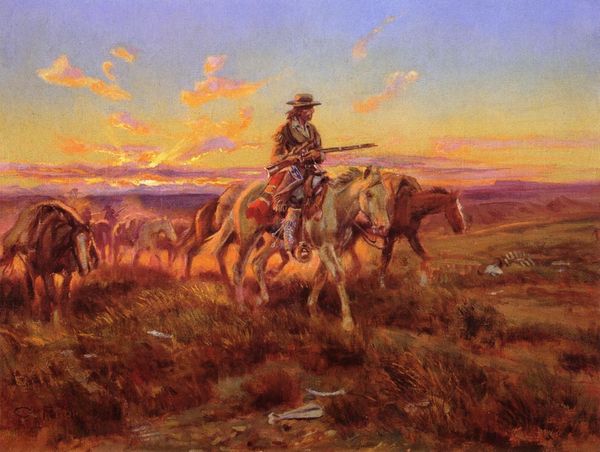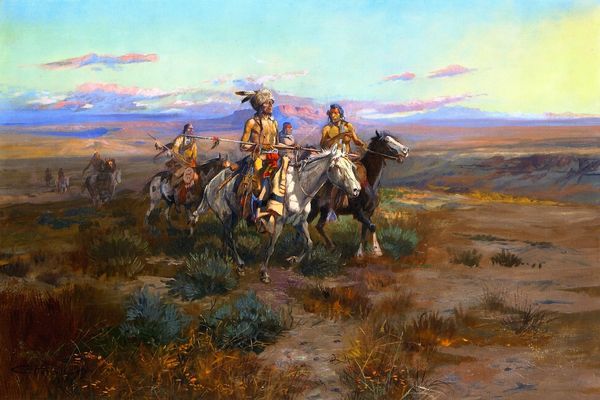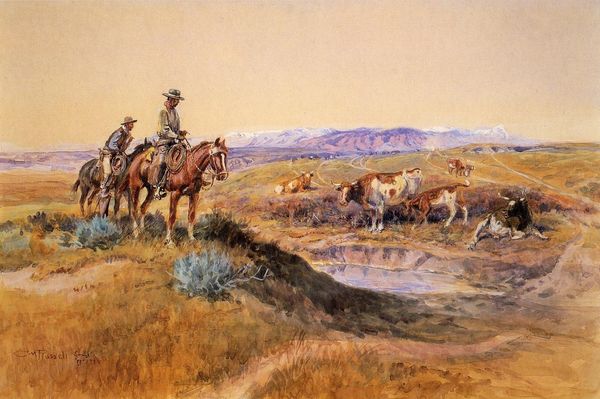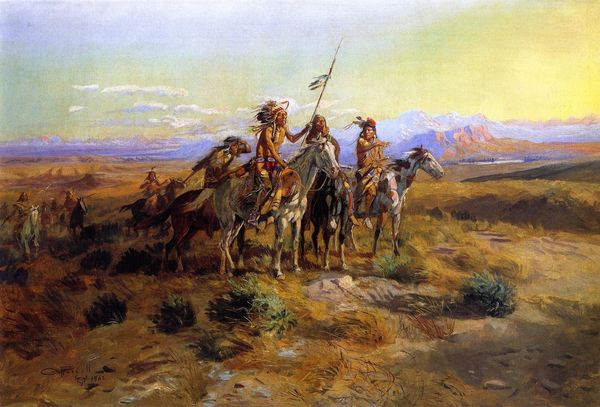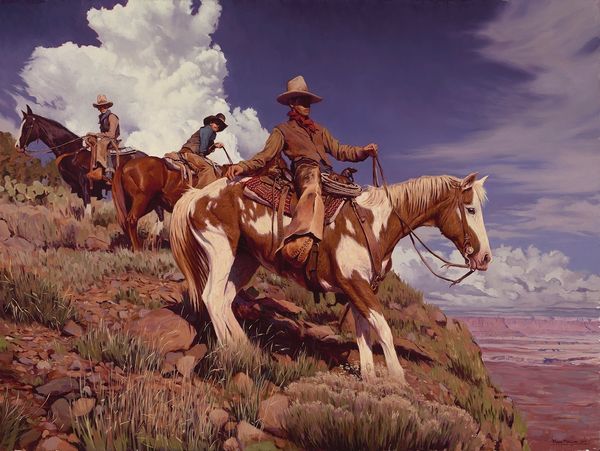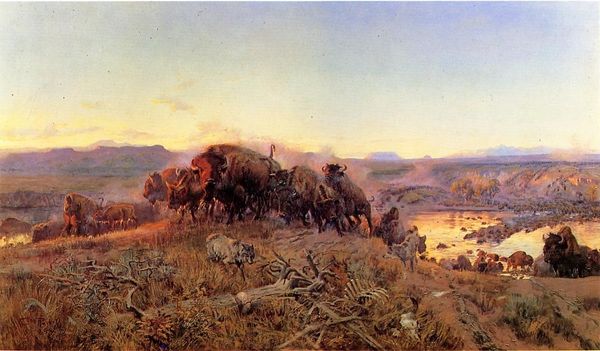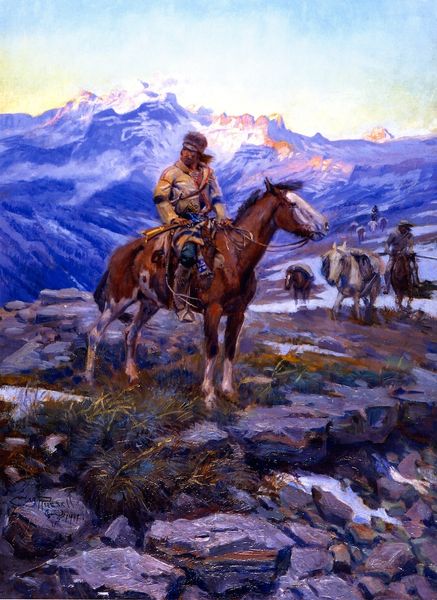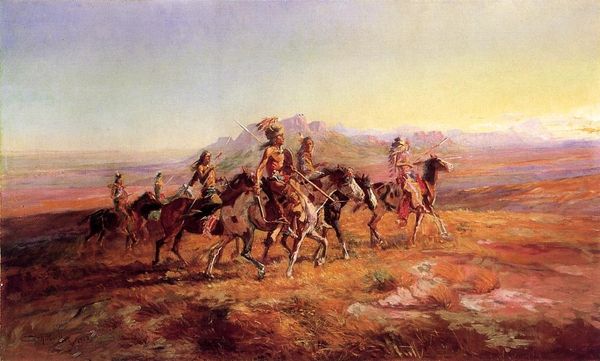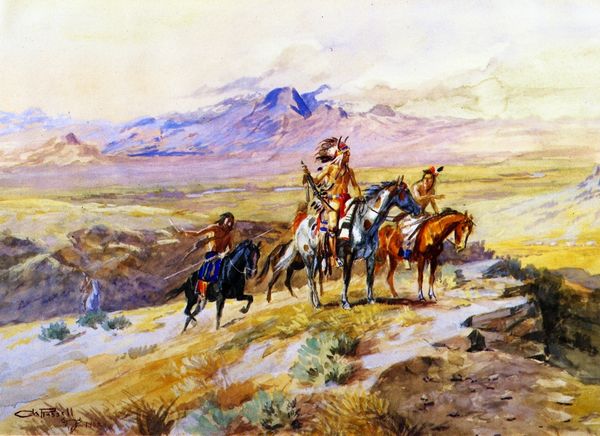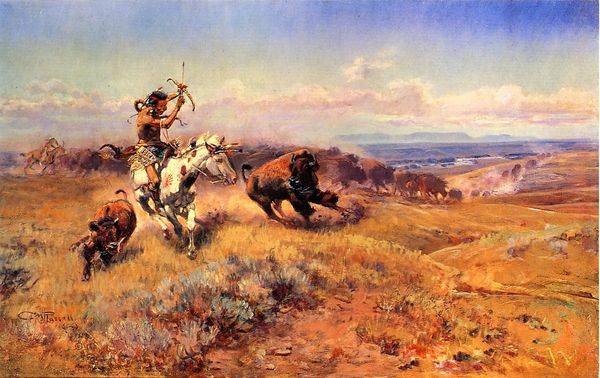
Copyright: Public domain
Curator: This is "Men of the Open Range," painted by Charles M. Russell in 1923. An oil on canvas depicting cowboys riding across a grassy plain at sunset. Editor: There's such a feeling of vastness in this piece. The muted oranges and blues create a dreamlike quality; a memory of the west, not a snapshot. Curator: Russell was deeply invested in representing the mythology of the American West. Examining the piece, you see these cowboys not as mere individuals, but symbols of a vanishing frontier—one romanticized, perhaps, but also deeply connected to ideas of freedom and self-determination. What happens when narratives, such as those about westward expansion, eclipse Indigenous histories and struggles? Editor: Indeed. And the specific poses – the way the riders and horses lean forward, emerging from that golden light. It evokes images of classical equestrian statues, immediately bringing to mind concepts of heroism, movement, but also…inevitability? Like figures from a Western frieze. They almost become timeless types. Curator: Exactly. We see here how deeply embedded those visual shorthands are within a dominant American consciousness. Yet, that heroism came at an obvious cost. The symbolism here brushes a complicated history—particularly for Indigenous communities of the West. I find myself questioning whether this artwork inadvertently immortalizes a narrative steeped in colonialism. Editor: It's in the sweeping vista, that grand scale! The romantic era sunsets connect to those earlier sublime landscapes by Cole and Church and even mirror westward expansion themes: manifest destiny, and the like. But yes, let's remember whose "destiny" was ignored. The cowboys are a prominent cultural signifier within America, but how does Russell deal with this cultural mythology within its historical circumstances? Curator: I appreciate how you've identified the layers within what seems, at first, a simple image. When contextualized against sociopolitical histories, “Men of the Open Range" opens a dialogue, asking questions about cultural production and collective memory. Editor: Yes, artworks serve as complex time capsules!
Comments
No comments
Be the first to comment and join the conversation on the ultimate creative platform.
